

| User guide |   |

MATLAB ships with a GUI design tool called GUIDE. This
doesn't use layouts, but forces users to manually position each element. This approach
is a much faster way to build simple user-interfaces, so why would you want to
use layouts?
The over-riding reason for using layouts or layout managers is
to gain control of the resizing behaviour of the interface without
having to write a complex "ResizeFcn". If you simply position user-interface elements
directly (either using GUIDE or programmatically), you
have two choices about what happens when the window resizes:
f =figure( 'Position', 200*ones(1,4) );axes( 'Parent', f, ... 'Units', 'Normalized', ... 'OuterPosition', [0.02 0.2 0.96 0.8] );uicontrol( 'Parent', f, ... 'Units', 'Normalized', ... 'Position', [0.02 0.02 0.46 0.16], ... 'String', 'Button 1' );uicontrol( 'Parent', f, ... 'Units', 'Normalized', ... 'Position', [0.52 0.02 0.46 0.16], ... 'String', 'Button 2' );
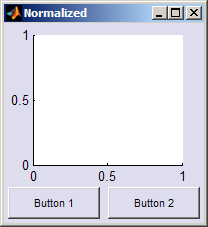 .
.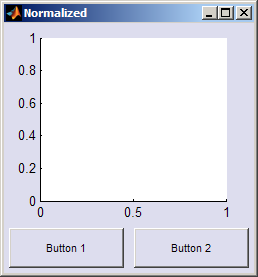
f =figure( 'Position', 200*ones(1,4) );axes( 'Parent', f, ... 'Units', 'Pixels', ... 'OuterPosition', [10 35 190 175] );uicontrol( 'Parent', f, ... 'Units', 'Pixels', ... 'Position', [5 5 90 25], ... 'String', 'Button 1' );uicontrol( 'Parent', f, ... 'Units', 'Pixels', ... 'Position', [105 5 90 25], ... 'String', 'Button 2' );
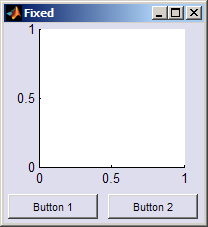 .
.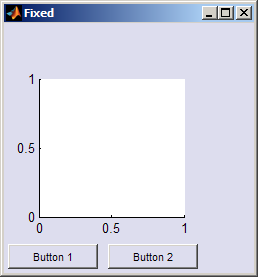
Neither of these alternatives is particularly useful for a serious user-interface. Typically there are user-interface components that should be fixed size: icons, buttons, selectors etc; and others that should resize with the window: graphs, images, prose text etc. To achieve this one needs to be able to specify which interface components should be fixed size and which variable. Over the last two decades, layouts have been shown to be the method of choice for achieving this.
f =figure( 'Position', 200*ones(1,4) ); vbox =uiextras.VBox( 'Parent', f ); axes( 'Parent', vbox ); hbox =uiextras.HButtonBox( 'Parent', vbox, 'Padding', 5 );uicontrol( 'Parent', hbox, ... 'String', 'Button 1' );uicontrol( 'Parent', hbox, ... 'String', 'Button 2' ); set( vbox, 'Sizes', [-1 35] )
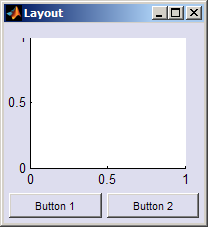 .
.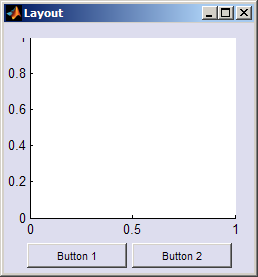
 |
Layout heirarchies | [Top] | Positioning Axes |  |